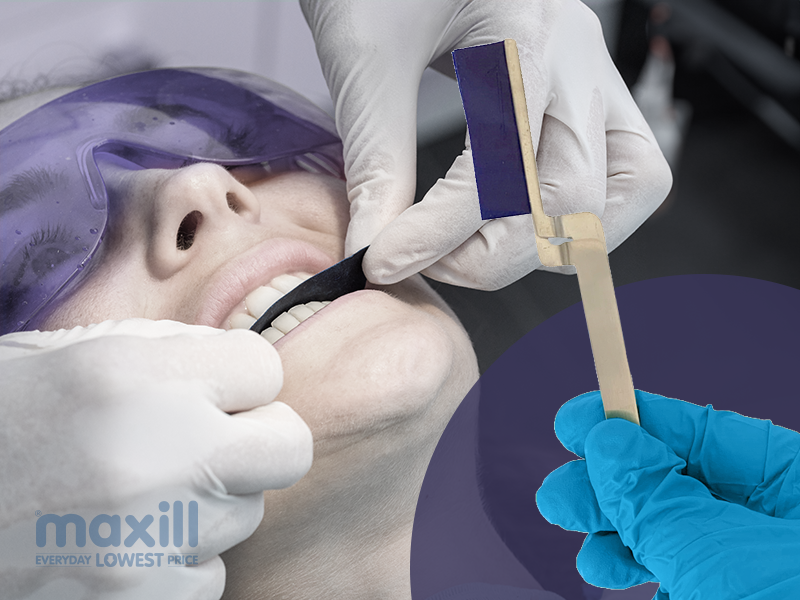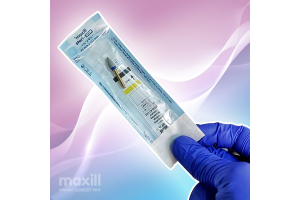Articulating Paper: A Bite-By-Bite Analysis

Dental articulating paper is a thin paper used by dentists to check and adjust a patient’s bite. It typically comes in thin strips or sheets coated with a special ink or substance that leaves marks when pressure is applied. Dentists place this paper between the teeth and have the patient bite down. The marks left on the teeth from the paper indicate areas where the teeth meet and where adjustments might be required to ensure a proper bite alignment. This helps in diagnosing and adjusting dental work or identifying irregularities in a patient’s bite.
What Is Articulating Paper Used for?
Articulating in dentistry refers to the relationship between the upper and lower teeth when they come together when biting or chewing. Articulating can be evaluated using various tools such as articulating paper; however, articulating foils and articulating wax can also be used.
The main purpose of articulating tools in dentistry are:
Assessment of Bite: Dentists use articulating materials, like paper or foils, to mark and identify contact points between teeth when a patient bites down. This helps high spots or irregularities in the bite that may require adjustments.
Checking Dental Work: After procedures like fillings, crowns, or denture fittings, articulating materials are used to ensure that the dental work doesn’t cause discomfort or interfere with the natural bite. The marks left on the teeth from the paper show where adjustments might be necessary.
Diagnosis: By analyzing the marks left from the articulating paper, dentists can diagnose issues such as malocclusion (misalignment of teeth), improper dental work, or bruxism (teeth grinding).
What Is Articulating Paper Made of?
Dental articulating paper is typically made of a thin, flexible paper material coated with a special colouring agent or ink. The coating is usually composed of waxes, dyes, pigments, or other substances that transfer colour upon pressure.
The paper itself is often made from cellulose or similar materials that provide the necessary flexibility and strength to withstand biting pressure without tearing easily. The coating is applied to one side of the paper, and when the patient bites down, the pressure causes the coating to transfer onto the teeth, marking the contact points between upper and lower and highlighting areas that may need to be reduced.
Does Articulating Paper Come in Different Sizes or Shapes?
Articulating paper primarily comes in two main shapes, straight/curved strips and horseshoe, each serving specific purposes in dental assessments. Strips, the more commonly used form, offer versatility, being cut into desired lengths and/or widths. They find widespread application in general bite assessments, allowing dentists to gauge overall bite alignment and make occlusal alterations.
On the other hand, the horseshoe shaped articulating paper holds a specialized role, proving particularly useful for patients with unilateral bites. Placed on the occlusal place, or entire biting surface of the teeth, this shape enables dentists to assess and pinpoint any imbalances in the bite force, determining if a patient favours a specific side. It can help in diagnosing discrepancies in contact points and pressure distribution, which is critical for addressing issues related to TMD (Temporomandibular Joint Disorder) and achieving a balanced occlusion.
What Is the Difference between Red & Blue Articulating Paper?
In dentistry, red and blue articulating paper serve a similar purpose, but they have differences in their characteristics that cater to various clinical needs.
Thickness: Typically, red articulating paper is thicker than blue. The thickness determines the pressure needed to leave a mark on the paper. Red paper is often used for larger restorations or adjustments requiring more force, while blue paper is more sensitive to lighter pressures, suitable for fine adjustments.
Colour Intensity: Red articulating paper tends to have a stronger colour intensity than blue. This means it can be more visible on teeth and is often chosen for identifying initial contact points or high spots during dental procedures.
Sensitivity: Blue articulating paper is more sensitive and thinner, making it suitable for detecting minor irregularities in the bite. It’s commonly used in situations where precision in identifying bite discrepancies is crucial.
Dentists may choose between red and blue articulating paper based on the specific requirements of the procedure or the level of precision needed to adjust the patient’s bite. Both colours serve the same fundamental purpose but offer different sensitivities and thicknesses to accommodate various clinical scenarios.
What Thickness of Articulating Paper Should be Used for Teeth?
The choice of articulating paper thickness in dentistry depends on the specific situation and the intended use during dental procedures. There isn’t a one-size-fits-all answer, as different thicknesses cater to varying clinical applications.
Thicker Paper: Thicker articulating paper (usually red) requires more force to leave marks on the teeth. It’s often used for larger restorations or adjustments that need more pressure to identify contact points accurately.
Thinner Paper: Thinner articulating paper (typically blue) is more sensitive and requires less force to leave marks. Dentists use thinner paper for fine adjustments or when precise revisions of slight bite variances are necessary.
In general, dentists might keep both thicker and thinner articulating papers in their arsenal to accommodate different scenarios. Choice of thickness is based on the procedure’s requirements and the level of pressure needed to accurately mark the teeth during bite assessment or dental work adjustments or modifications.
Conclusion
In dentistry, articulating paper is a vital component, offering precise insights into a patient’s bite or occlusal relation. The distinctions between red and blue variations provide tailored options for dental procedures, ensuring accurate assessments and adjustments. Crafted with resilient materials and specialized coatings, this unassuming paper remains an indispensable tool, guiding dentists towards optimal bite alignment for patient care and comfort.
Sources:
- Carey JP, Craig M, Kerstein RB, Radke J. Determining a relationship between applied occlusal load and articulating paper mark area. Open Dent J. 2007;1:1-7. doi: 10.2174/1874210600701010001. Epub 2007 Jul 23. PMID: 19088874; PMCID: PMC2581523.
- Shetty PP, Chowdhary R. Prosthodontists’ clinical accuracy in selecting high force occlusal contacts from articulating paper marks – A questionnaire study. Adv Dent Tech. Published online October 25, 2023:1-15.











